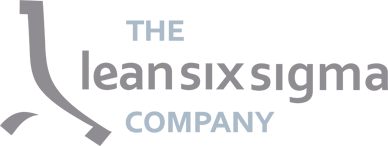Kaizen
In 1986, Masaaki Imai released a book with the title: Kaizen, the key to Japan’s Competitive Success. Masaaki described the difference in the area of change management between the Western World and Japan. The difference? Kaizen.
Fundamental difference with traditional Western management
The fundamental difference lies in Change Management and the Management of Change. This difference is best described as managing gradual change (Change management / Kaizen) and managing of abrupt change (Management of Change). It is part of the culture of Japanese organizations to continuously initiate gradual changes. It is traditionally viewed that Western managers carry out controlled abrupt changes. In both cases, Change Management is spoken of but in Japan, this term is understood differently.
What is Kaizen?
Kaizen means “continuous improvement” and is an organized use of common sense to save on spending, to raise quality, to shorten delivery time and to increase customer satisfaction. Kaizen is a culture and not so much a plan of action or a model. There are indeed ways to foster a culture of Kaizen, such as Kaizen events and Gemba Kaizen. Of course, process improvement with Lean Six Sigma contributes to a Kaizen culture.
Kaizen event
A Kaizen event is a 3 – 5-day long project that starts with the problem and works through to the implementation of the solution. The Japanese term for a Kaizen event is “Kaikaku” (radical change). General Electric called a Kaizen event a Workout or “Blitz”.
The characteristics of a Kaizen event:
- Project with a duration of 3 to 5 days
- 100% committed resources
- Until implementation
- Project with a narrow focus
- Problem is urgent
- Solution is not yet known
A Kaizen event is the Lean’s answer for a 3 – 5-month long project. In a project like this one, there is lots of squandering, such as, overproduction, waiting time and defects.
Gemba Kaizen
Gemba Kaizen means “the continuous improvement of the workplace”. The employees control the products and services for the customers. Important in this discussion is implementing improvements on the work floor and to detect practical problems. This management style is called ‘Kaizen Management’. Problems on the work floor are not management problems, and therefore, the solution can not come from management. The executives can better solve these operational (executive) problems themselves. They spend the whole day on the work floor and have the most knowledge of it. The Western term for a Kaizen Management is Operational Excellence. This way of thinking is also about the continuous improvement of the operational state of affairs, wherein executives and supervisors both have their own roles and responsibilities.
The Kaizen manager
The Kaizen manager spends time on the gemba (workplace) and observes what happens. The employees also observe and discuss these observations together. The Kaizen manager is responsible for the starting of the 5S initiatives and Standard Operating Procedures. He or she gives the employees lots of time to implement the improvements in the workplace. The Kaizen manager has a coaching role throughout the process. If something goes wrong in the daily activity the Kaizen manager takes emergency measures and discusses the problem with the leading executives. The Kaizen manager discusses the organization’s policy with the employees, creates a safe and secure working environment and takes care of removing any barriers that the employees are experiencing by improving their gemba. Employees who have learned to continuously improve themselves and the gemba are valuable to the organization. With this knowledge and experience, they can be placed in other areas.
Kaizen in relation to Lean Six Sigma
Kaizen and Lean Six Sigma are both methodologies to increase customer satisfaction, to realize lasting improvement of company results and to continuously improve in constructive ways. In both cases, this is about the reduction of squandering and variation. Kaizen goes even further in regards to the awareness of the management and the employees. Lean Six Sigma, on the other hand, is more focused on the financial results of the organization. Kaizen works best if the entire organization works together. Lean Six Sigma projects can be carried out by a particular part of the organization.
Check out our Lean Practitioner page if you want to know more in how using Kaizen: https://www.theleansixsigmacompany.us/lean-practitioner/
Want to learn more or have a question?
Request our prospectus.
